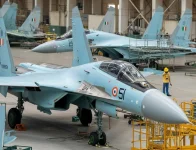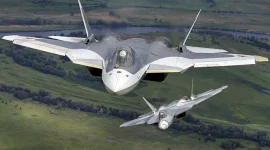- Views: 3K
- Replies: 3
India's burgeoning aerospace industry has a unique opportunity to leverage its long-standing partnership with Russia to accelerate its indigenous development of medium transport aircraft (MTA).
By acquiring blueprints for unused MTA designs from Russian design bureaus like Antonov, India could significantly advance its capabilities and potentially replicate China's success with its Y-20 heavy transport aircraft.
Russia possesses a rich history of aircraft design, particularly in the realm of transport aircraft. Despite the economic and political changes since the Soviet era, many innovative designs remain untapped due to financial constraints or shifts in strategic priorities. These dormant designs represent a valuable resource for countries like India seeking to bolster their domestic aircraft manufacturing capabilities.
China's Y-20 serves as a compelling example. Developed with significant support from Russian aerospace expertise, particularly from the Antonov design bureau, the Y-20 marked China's entry into the production of large transport aircraft. This collaboration facilitated technology transfer and accelerated the development process, demonstrating the mutual benefits of such partnerships.
India has a long-standing interest in developing its own MTA. Previous collaborations with Russia, such as the Multirole Transport Aircraft (MTA) program intended to replace the Indian Air Force's aging Antonov An-32 fleet, have shown both promise and challenges.
The MTA project with Russia, though initially promising, was eventually shelved due to disagreements over design and cost-sharing. This experience underscores the need for a more streamlined and focused approach in future collaborations.
Acquiring blueprints for unused Russian MTA designs offers several advantages for India:
- Accelerated development: Leveraging existing designs allows India to bypass initial design phases, focusing on adapting the aircraft to its specific requirements rather than starting from scratch.
- Technological advancement: Gaining access to these designs provides valuable insights into advanced aerodynamics, propulsion systems, and materials science, crucial for modern aircraft development.
- Reduced development time and costs: Utilizing pre-existing blueprints can significantly reduce R&D expenses and shorten the timeline for operational deployment.
- Strengthened bilateral ties: This move would reinforce the strategic partnership between India and Russia, potentially leading to further collaborations in other high-tech sectors.
This initiative would not only fulfill India's national security needs but also potentially open avenues for export, contributing to economic growth and technological advancement.


